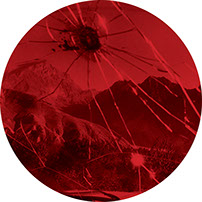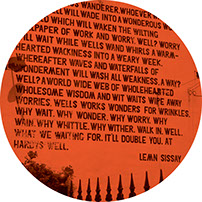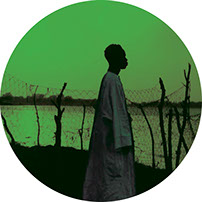N O T E S F R O M T H E S O U T H
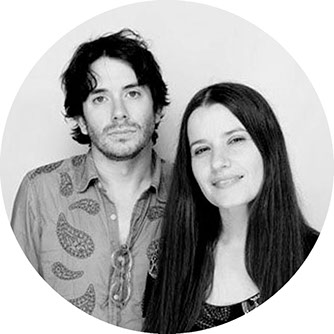 A Poem for Fur
A Poem for Fur
I spoke to filmmakers Melanie Shatzky and Brian M. Cassidy about their short film Animals under Anaesthesia: Speculations on the Dreamlife of Beasts.
Previously responsible for the sublime and thought-provoking feature-length films Francine and The Patron Saints, filmmaking duo Melanie Shatzky and Brian M. Cassidy occupy an idiosyncratic corner of cinema in which the distinction between the real and the cinematic is stretched and blurred. I spoke to them about their new short film Animals under Anaesthesia: Speculations on the Dreamlife of Beasts, which had its world premiere at Locarno last year and which will be showing at the Museum of the Moving Image in New York in January.
Peter Machen: Hi Melanie and Brian. Thanks for chatting to me about Animals under Anaesthesia. It’s such a strange and compelling film. To what extent was your speculation informed by scientific facts about animals’ perception and interior realities?
Melanie Shatzky and Brian Cassidy: Our starting point was a pseudoscientific and absurdist attempt to psychoanalyze the inner thoughts of animals, the result of which becomes a nightmarish reflection of our own human anxieties. When we refer to ‘Speculations on the Dreamlife of Beasts’, it might be said that the beasts we are referring to are humans, not animals.
PM: Science can tell us about the physiology of animals’ brains and how they respond to stimulus and this gives us some idea of what their perceptual experiences will be. But I’ve always wondered about this – for example, dogs supposedly see in black and white, but this is a deduction based on how our own brains and vision works. I imagine that it might actually be very different to our imagined notions since we don’t have access to their actual experience. How similar to human consciousness do you think the consciousness of our pets is? And do you think that by sharing our physical spaces with them that we might also impact on the way that they perceive the world?
MS&BC: We are both animals lovers, and are madly in love with our dog, Pixel. We recognize that she experiences the world on a different frequency than we do, and yet at the same time, her emotional life seems to be in line with ours. We agree that it seems impossible to fathom an animal’s reality as we only have our own reality from which to imagine and draw from. It’s hard enough to adequately imagine the reality of another human being with whom we share a language and anatomy, but not lived experience. We frequently refer to our dog as a poem with fur. We feel there’s a sense of awe and magic in the gap that separates us.

With regards to whether sharing our space might impact an animal’s perception of the world, we would say yes. If you’ve spent any time with an animal who has lived in unfavourable conditions imposed by humans, you will likely see that reflected in the animal’s behaviour. We feel that trust versus lack of trust that you see in household pets is largely created by the conditions set by humans.
PM: Did you know the animals who are anaesthetized in the film? Or their owners? How did you get access to the veterinarian’s operating table?
MS&BC: We made a narrative feature film a few years ago called Francine in which there was a scene of a cat being anaesthetized. The image was so striking – of the animal on its back with seemingly no will of its own. In this vulnerable position, the animal was firmly at the mercy of human will. We were deeply haunted by this image, and it lingered with us. We felt it was an apt visual representation of humans, not only imposing their own will onto animals, but also of humans projecting their own sentiments onto animals. We decided to revisit that same vet where we shot that original scene and explore these notions of animal versus human will. Most of the animals in Animals under Anaesthesia were filmed in that particular vet’s office. The vet has a relationship with the local SPCA, where he sterilizes shelter animals for free. So most of the animals featured in the film did not, in fact, have owners.
PM: The ‘dream lives’ contain images that appear to be memories of actual experience? How did you shoot these ‘memories’? Some of them look as if you put cams on the animals. Was that the case?
MS&BC: A significant portion of the material was filmed using a small GoPro camera. One of the greatest advantages of that camera was its ability to be submerged in various bodies of water - lakes and ponds, the dirty dishwater of a strip club kitchen sink, the stagnant puddles at the base of gravestones… Plunging down into and emerging out of these various bodies of water developed into a thematic link because of the places the camera could go. The camera permitted us to remain nimble, and because of this nimbleness, there’s perhaps a sense of the animals’ POV in some of the scenes.

PM: Tell me about the potbellied pig walking on a treadmill in water. What was the real-world context (if there was one)? How does it relate to the fragments of human sexuality that we see in his ‘dreams’?
MS&BC: The pig was undergoing a therapeutic relaxation procedure to soothe its aching joints. The tank is a strange contraption that slowly fills with water as the pig walks in place. It’s difficult to talk concretely about the relationship between this phenomenon and the images of violence, menace and sexuality which follow. As with an actual dream, at some point the piece began forming itself and these oblique relationships between things grew more and more insistent as we were editing.
PM: As well as a number of short documentaries, you have made one fiction feature (Francine) and one full-length documentary (The Patron Saints). Animals under Anaesthesia is midway between fiction and doccie but is really something else entirely. If you had to categorise the film, where would you place it?
MS&BC: We work at the crossroads of fiction, documentary and still photography. There isn’t really a name for that. No one particular category seems fitting for this piece.
PM: To what extent do you think the film is actually about human beings and our perceptions of animals’ perceptions?
MS&BC: We were interested in how images might manifest in our unconscious human minds and how we grasp to give shape and meaning to our perceptions, in this case through anthropomorphic impulses. It is not a thesis-driven film in which the viewer is meant come away feeling as if they know more about the animal mind than they did before, but perhaps best met at the sensory level and with a sense of humour.
PM: Thanks so much to both of you. Best of luck with your next screening.
Animals under Anaesthesia: Speculations on the Dreamlife of Beasts screens at The Museum of the Moving Image on Sunday January 8th at 7pm, and again on Monday January 16th at 2pm
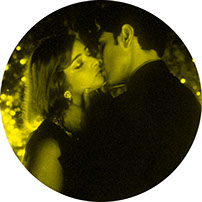
More
Film
© 2017 Peter Machen. All rights reserved About Contact Peter Machen Web design: The Communication Factory
